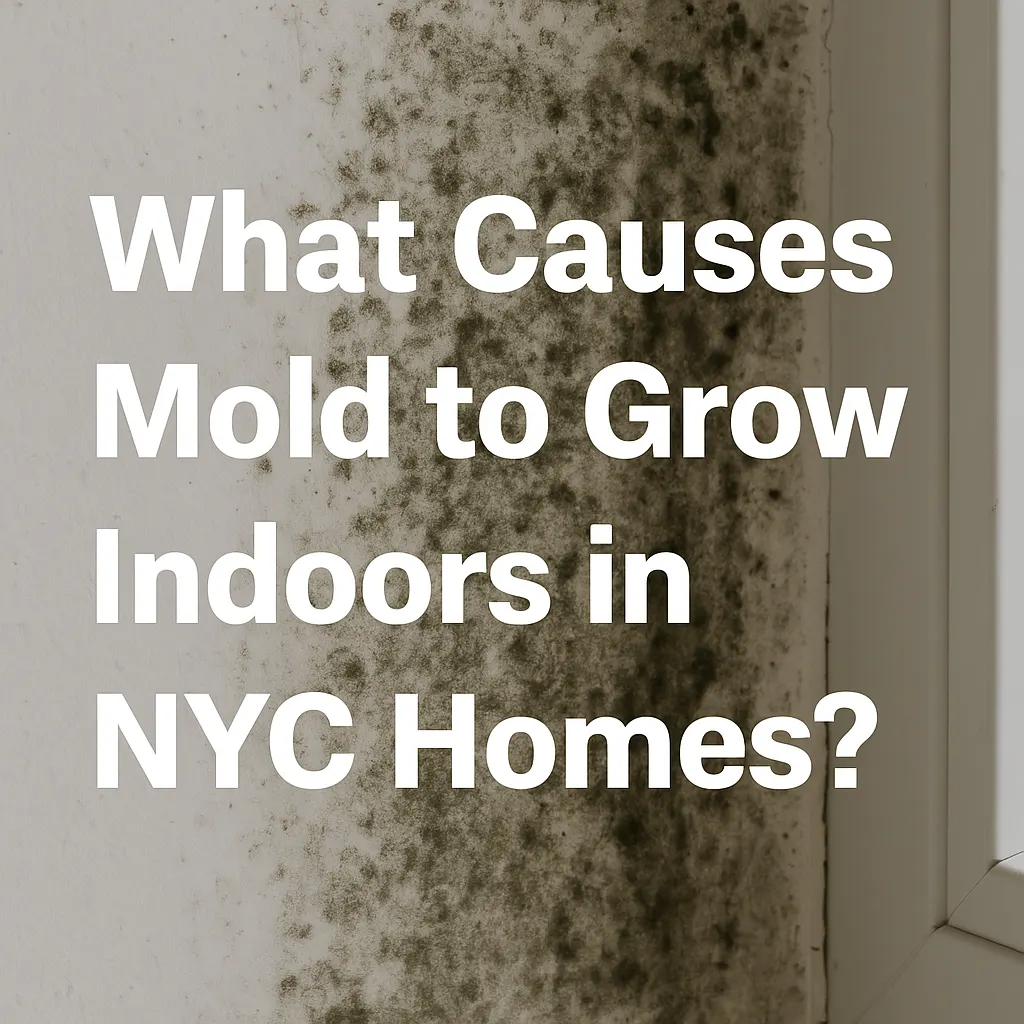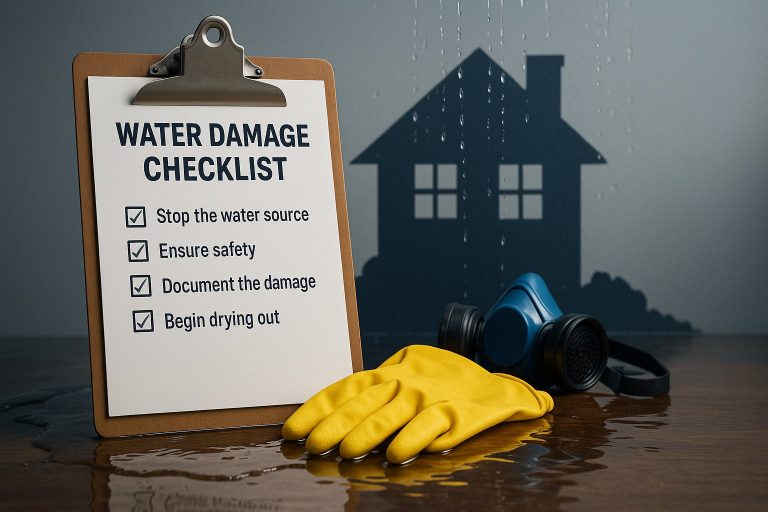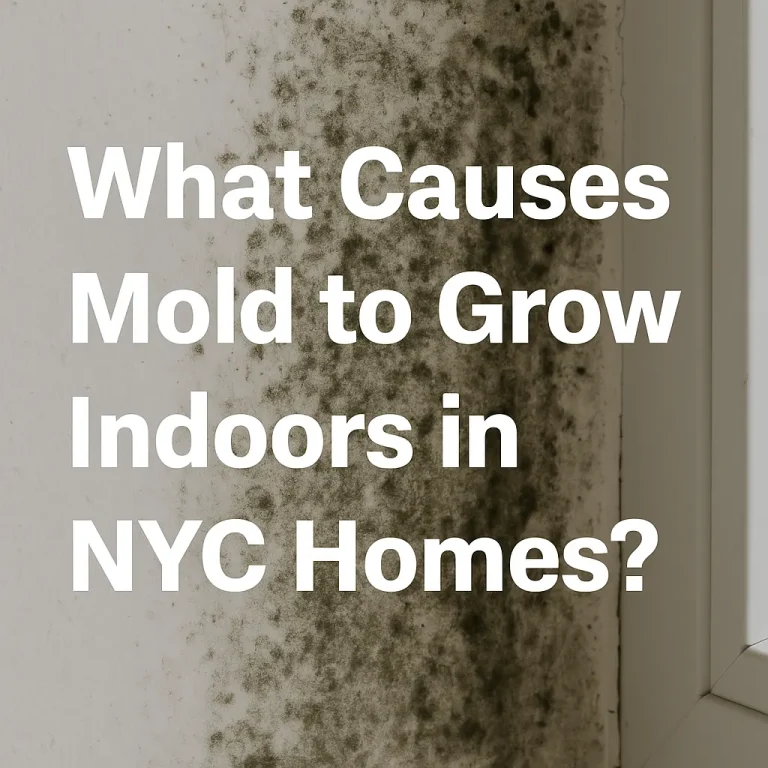Mold in NYC: A Common Hidden Threat
New York City’s aging infrastructure, dense housing, and humid summers make it a perfect breeding ground for indoor mold. Whether you live in a Manhattan high-rise or a Brooklyn brownstone, mold can grow silently behind walls, under flooring, or in ceilings — often before you even notice a smell.
If you’ve spotted strange dark spots on your walls or noticed a musty smell at home, you might be dealing with mold. But why does mold even show up in the first place?

Mold’s Favorite Recipe: Moisture, Food, and the Right Conditions
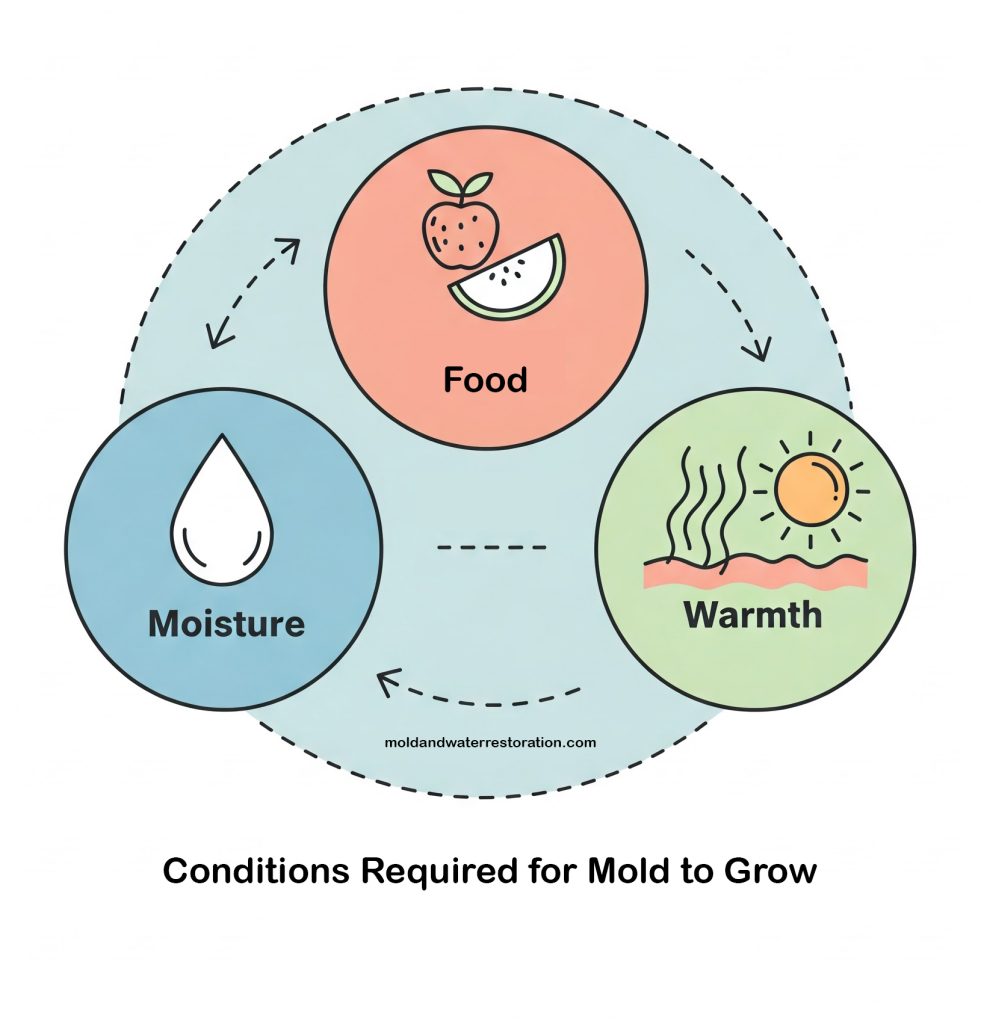
Mold is a natural part of our environment. Outdoors, it’s harmless. Indoors, it’s a different story.
For mold to grow inside your home, it only needs three things:
- Moisture — from leaks, humidity, or condensation.
- Food — like wood, drywall, dust, or even old carpet.
- A cozy environment — warm temperatures and little airflow.
If all three show up in the same place, mold can start growing within 24–48 hours.
🔍 The 7 Most Common Causes of Indoor Mold Growth
1. Moisture and Humidity
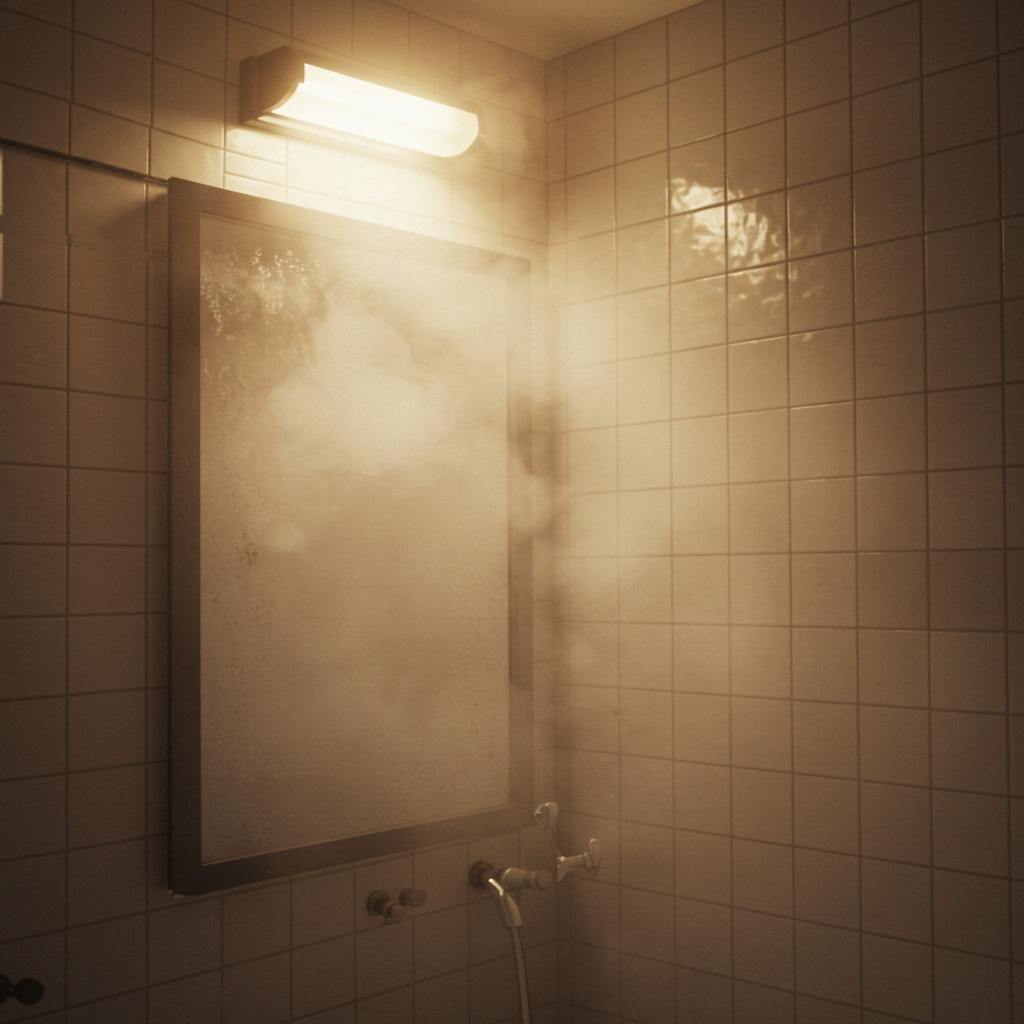
Mold needs moisture to grow. NYC’s naturally humid climate, especially in the summer, provides a steady supply of it. Poor ventilation in bathrooms, kitchens, and basements traps humidity — leading to the perfect mold environment.
Tip: Keep indoor humidity below 50%. Use exhaust fans or dehumidifiers.
2. Water Leaks
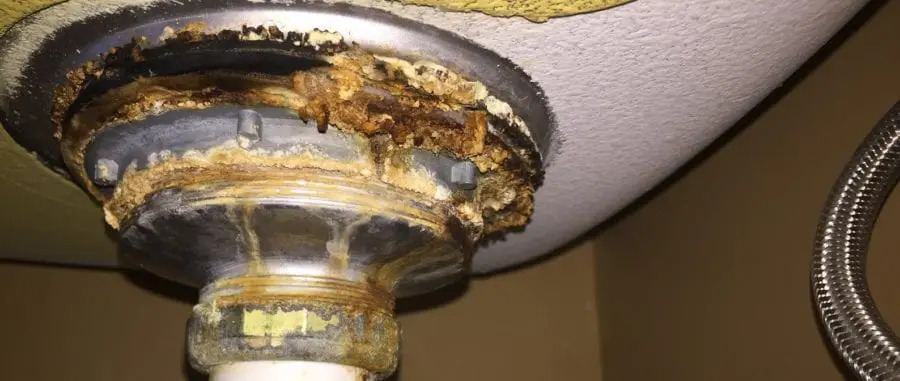
Leaky pipes, roofing, or appliances like dishwashers and washing machines are among the most common sources of mold. In NYC, aging plumbing in pre-war buildings is a major culprit.
Warning sign: If you notice discoloration or bubbling paint, check behind it for mold.
3. Flooding & Water Damage

Whether it’s from a severe storm, broken pipe, or city-wide sewer backup, water damage must be addressed quickly. Mold can begin growing within 24 to 48 hours after a flood event.
Action step: If your home has been flooded, call a water damage restoration team ASAP.
4. Poor Ventilation
NYC apartments often have sealed windows, limited airflow, and older HVAC systems. When air doesn’t circulate, moisture lingers and mold forms, especially around windows, corners, and closets.
Solution: Improve airflow with fans and open windows when weather permits.
5. Condensation
Condensation forms when warm indoor air hits cold surfaces like windows or exterior walls — common in NYC’s winter months. This moisture can pool and create hidden mold colonies.
Pro Tip: Insulate windows and exterior walls to minimize condensation.
6. Neglected HVAC Systems
Your air conditioning unit or heating ducts can harbor mold if not cleaned regularly. Dust, moisture, and mold spores combine in ductwork to spread mold throughout your home.
Reminder: Schedule HVAC inspections annually.
7. Building Envelope Issues
Cracks in walls, missing roof shingles, or poor flashing around windows let moisture in from the outside. Many NYC buildings have outdated or deteriorated exterior envelopes that allow water intrusion.
Get an inspection: LL Evolution NYC can assess your property for hidden mold risks.
Everyday Activities That Add Moisture
It’s not just disasters that cause problems. Regular, everyday habits can quietly feed mold growth.
Simple activities like:
- Showering without using a fan.
- Air-drying clothes indoors.
- Boiling water for long periods without ventilation.
All of these add moisture to the air, slowly increasing the risk of hidden mold.
Common Household Materials Mold Loves
Mold isn’t picky. Give it something organic to feast on, and it’s happy.
Here’s what mold often grows on inside homes:
- Drywall (especially paper-backed)
- Wood (studs, floors, framing)
- Carpet and upholstery (especially if damp)
- Cardboard boxes
- Dust and dirt buildup
In other words, it’s important to control moisture because mold can grow on a shocking number of everyday materials.
What Temperatures Make Mold Thrive?
Mold thrives in warm, comfortable environments — basically, the same temperatures we like too!
Most mold species prefer:
- Temperatures between 60°F and 80°F (16°C to 27°C)
That’s why mold is so common inside homes, especially in areas like bathrooms, basements, and kitchens.
Where Mold Typically Hides Inside a House
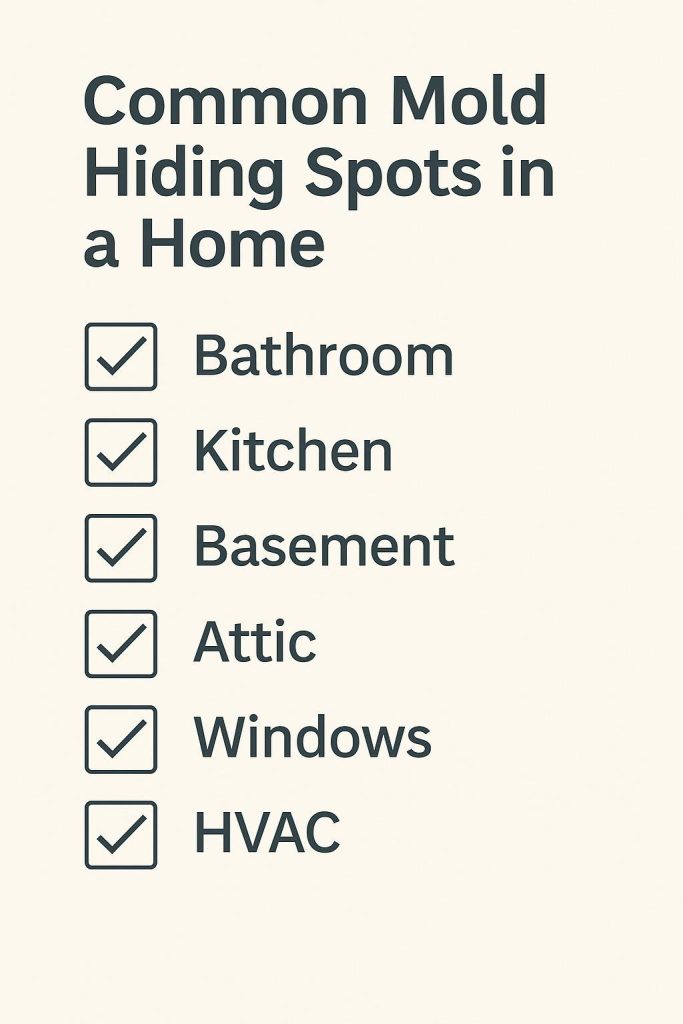
Some areas are more vulnerable to mold than others. Watch out for:
- Bathrooms (around showers, tubs, and under sinks)
- Kitchens (near sinks and dishwashers)
- Basements and crawl spaces
- Around windows and door frames
- Inside HVAC systems and ductwork
- Behind walls and under flooring (especially after leaks)
If you suspect mold, these spots are good places to start looking.
⚠️ The Hidden Dangers of Mold
Mold isn’t just ugly or smelly — it can cause:
- Respiratory issues & asthma
- Allergic reactions
- Fatigue, brain fog, and skin irritation
- Property damage and decreased home value
🧰 How LL Evolution NYC Can Help
At LL Evolution NYC, we specialize in professional mold remediation for NYC homes, apartments, and businesses. Our certified team uses moisture detection, air quality testing, and advanced remediation techniques to safely remove mold and prevent it from returning.
📞 Request a Free Mold Inspection
Think you may have mold? Don’t wait.
✅ Free, no-obligation estimates
✅ Certified NYC mold remediation experts
✅ Emergency response available
Call LL Evolution NYC at (347) 369-1545 or Request a Free Estimate by filling out the form today.

